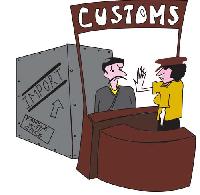
Basically, measures aimed to restrict imports are divided into two: tariff and non-tariff barriers. Tariff is the most popular form of trade control measures. An import tariff (most probably, tariff is made on imports and rarely on exports), is a tax imposed on the import of a commodity. Tariff is usually expressed as a percentage of the price of the imported commodity.
What is quota?
Non tariff barriers (NTBs) are restrictions that are not in the form of tariff. The most important NTB is quota or quantitative restrictions. Under quota, import of a commodity is restricted to a specific quantity. For example, if a quota of 1000 units is imposed on the import of cars whose price is above Rs 1 crore; only 1000 such cars will be imported. There is no tax on imports. Import is controlled through license.
Why quota is more dangerous than tariff?
The difference between tariff and quota is very clear. In the case of a tariff, unlimited amount of the commodity can be imported. Only condition is that importers should pay the tax. On the other hand, in the case of quota, only a limited quantity can be imported. In this sense, quota gives more protection to domestic producers against imports compared to tariff. Similarly, they can well anticipate the import quantity while designing their production strategies.
From the angle of international trade, quota is more dangerous than tariff as quantity of imports is strictly limited. It discourages trade more compared to tariff. Even if consumers are ready to pay higher price, commodity can’t be imported above the set limit. Here, tariff has more flexibility.
The WTO instructs its members to abolish quota. Instead, tariff can be imposed and this tariff should be kept within the limit set by the WTO.
*********









